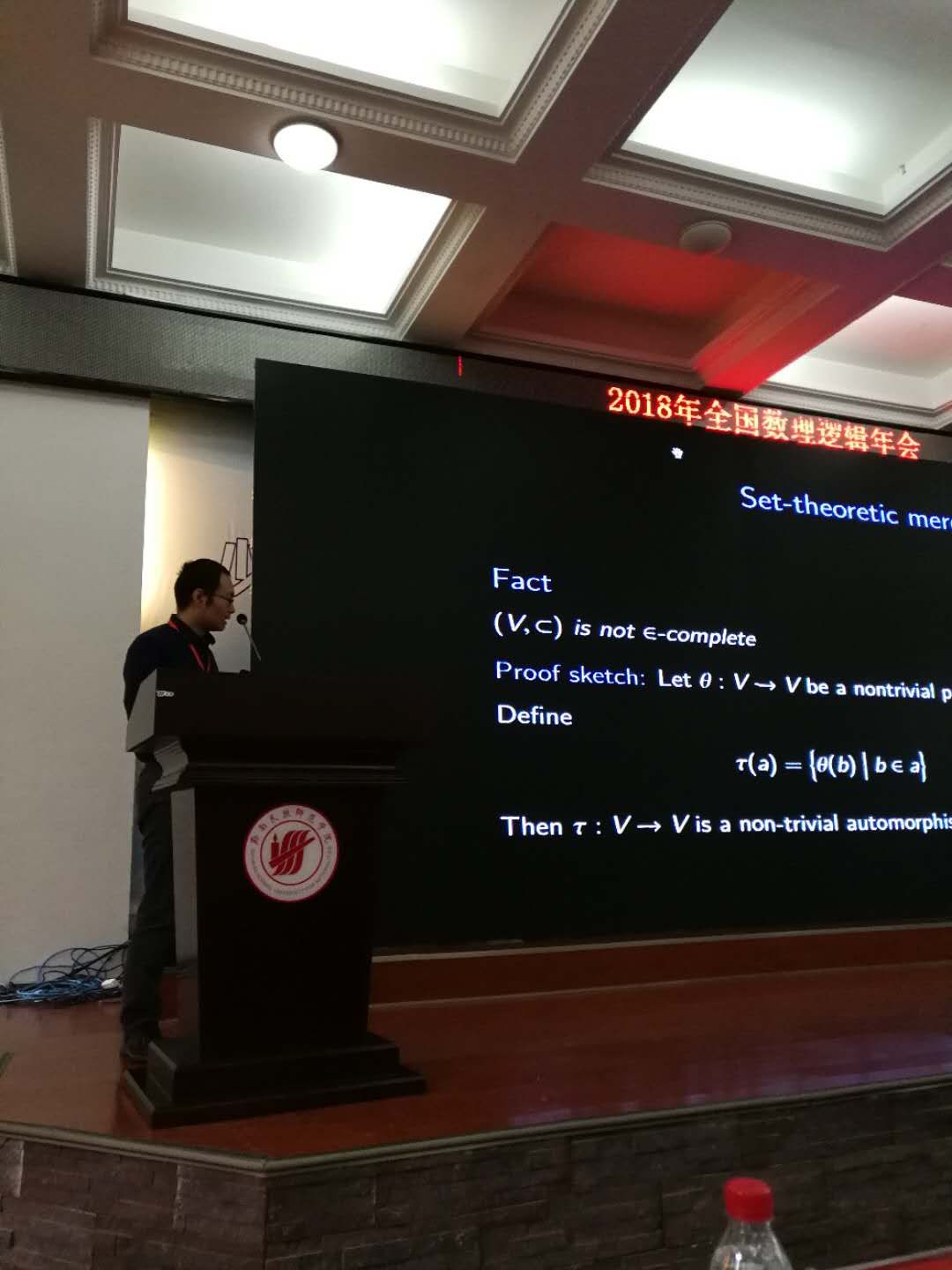
In my talk at 2018 Chinese Mathematical Logic Conference, I asked if \((V,\subset,P)\) is epsilon-complete, namely if the membership relation can be recovered in the reduct. Professor Joseph S. Miller approached to me during the dinner and pointed out that it is epsilon-complete. Let me explain how.
Theorem
Let \((V,\in)\) be a structure of set theory, \((V,\subset,P)\) is the structure of the inclusion relation and the power set operation, which are defined in \((V,\in)\) as usual. Then \(\in\) is definable in \((V,\subset,P)\).
Proof.
Fix a set \(x\). Define \(y\) to be the \(\subset\)-least such that
\[\forall z \big((z\subset x\wedge z\neq x)\rightarrow P(z)\subset y\big).\]
Actually, \(y=P(x)-\{x\}\), so \(\{x\}= P(x) – y\). Since set difference can be defined from subset relation and \((V,\subset,\{x\})\) can define \(\in\), we are done.
\(\Box\)
Here is another argument figured out by Jialiang He and me after we heard Professor Miller’s Claim.
Proof.
Since \(\in\) can be defined in \((V,\subset,\bigcup)\) (see the slides). Fix a set \(A\), it suffices to show that we can define \(\bigcup A\) from \(\subset\) and \(P\).
Let \(B\) be the \(\subset\)-least set such that there is \(c\), \(B=P(c)\) and \(A\subset B\). Note that
\[
\bigcap\big\{P(d)\bigm|A\subset P(d)\big\}= P\big(\bigcap\big\{d\bigm|A\subset P(d)\big\}\big).
\]
Therefore, \(B\) is well-defined. Next, we show that
\[
\bigcap\big\{d\bigm|A\subset P(d)\big\}=\bigcup A.
\]
Clearly, \(A\subset P(\bigcup A)\). This proves the direction from left to right. For the other direction, if \(x\) is in an element of \(A\), then it is in an element of \(P(d)\) given \(A\subset P(d)\), i.e. it is an element of such \(d\).
Therefore \(\bigcup A\) is the unique set whose power set is \(B\).
\(\Box\)